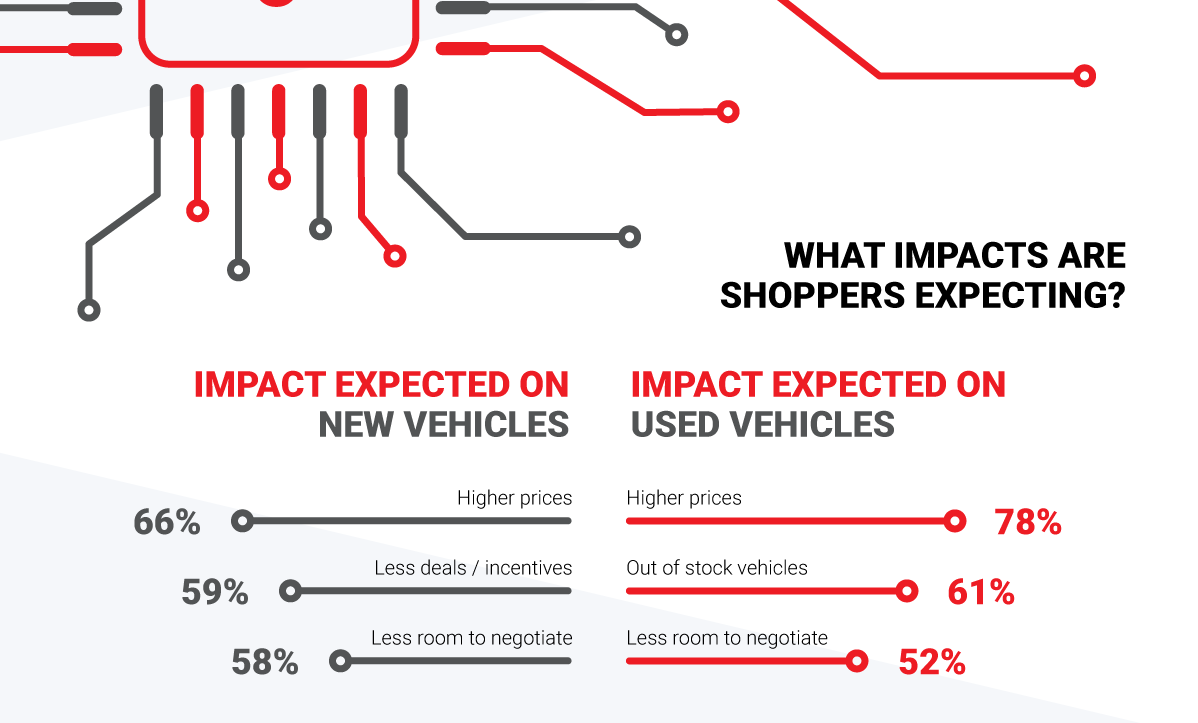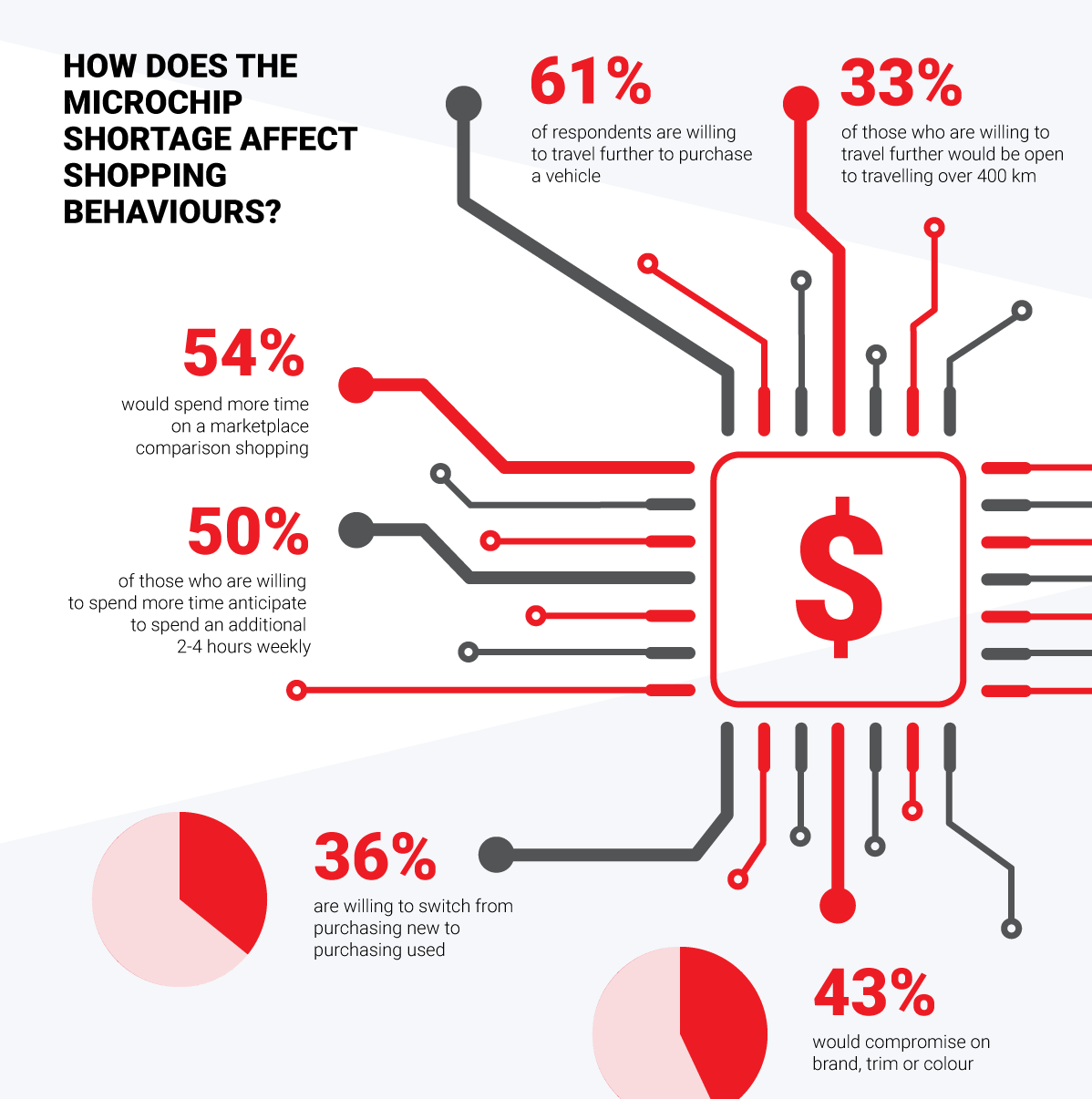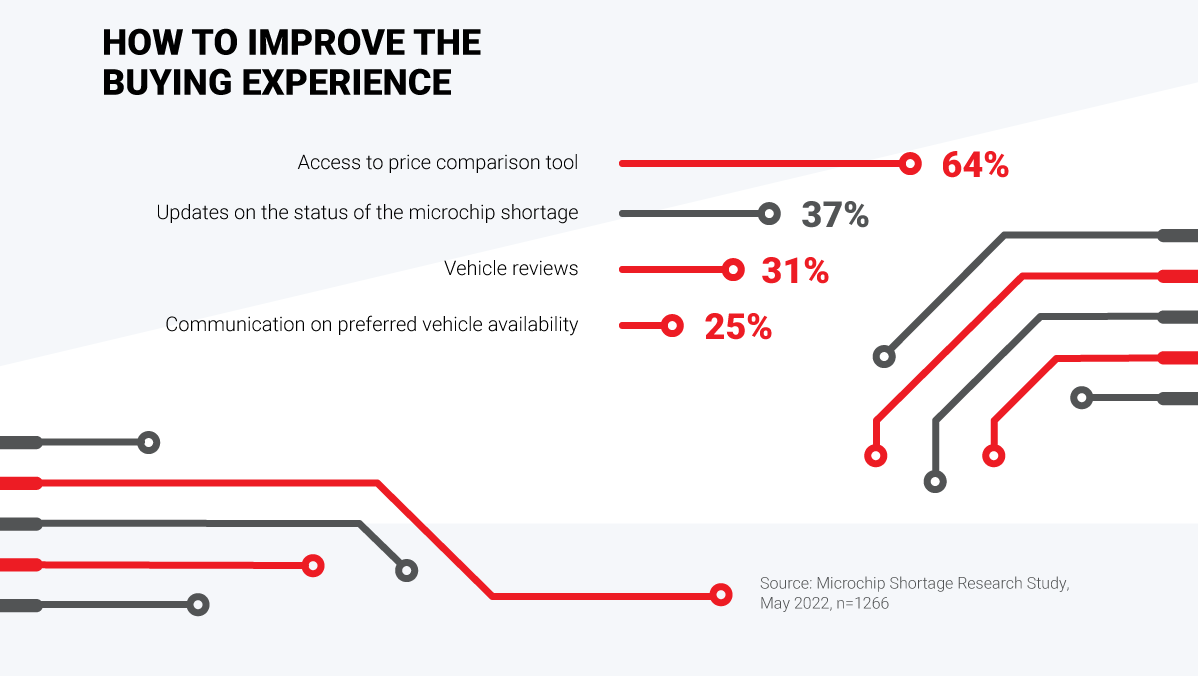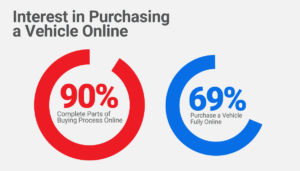As the microchip shortage continues to impact the automotive sector, albeit at a lesser degree than a year or even a few months back, we checked in with car shoppers on AutoTrader.ca to get a better feel for their knowledge and experience with shopping for a vehicle during this time. Overall, we found that consumers are aware of the issues with microchip production and sourcing, and dealers who know the issues shoppers face can plot their marketing and sales strategy to help them effectively navigate through it.
The study, conducted in May of this year, uncovered that 96% of vehicle intenders are aware of the shortage, up from 88% a year ago. Only 39% of car shoppers have been personally affected by it, and those who haven’t so far are worried about what it will mean to them. You can’t effectively meet their concerns until you determine the specifics surrounding those concerns.
Among Canadians new car shoppers, 78% expect a longer wait time to get into a new vehicle and 75% believe there to be an inventory shortage. Prices are also a concern, with 66% expecting that vehicles will cost more. Automotive consumers also don’t believe they’ll get any price-tag relief, as 59% expect fewer deals or incentive offers, and 58% expect less flexibility to negotiate price.
For those considering used vehicles, 78% expect higher than normal price tags, while 44% expect fewer deals or incentives, and 52% believe they won’t have much, if any, opportunity to negotiate. This may be driven by perceived scarcity impacting the used car market, as 61% expect pre-owned vehicles to sell out quickly, resulting in an inventory crunch.
All of this results in shoppers feeling frustrated about the process, even if they haven’t yet been affected by the issues that they fear they will face. As a result, of the vehicle shortage, 41% are discouraged by how much more time and effort they must spend on sourcing and buying the right vehicle, and 37% are stressed about finding one that aligns to their needs and budget.
This is where dealers have an opportunity to step in to work with customers to overcome their hesitancy and guide them through the process. Although dealers may not have any control over the microchip shortage, they can certainly provide car shoppers with options and opportunities to steer them in the direction of a vehicle that is a great fit for the most serious buyers, aligning to both prerequisites and personal or household finances.
Overall, car shoppers in the market for a new vehicle are more likely to wait a long time for vehicle delivery and purchase a new car without first test-driving the vehicle. Similarly, used vehicle intenders are more likely to spend more time shopping online automotive marketplaces.
Both new and used vehicle intenders are prepared to pay more for a vehicle – 22% and 23% respectively – and are willing to go $2,000 to $4,000 over their initial budgets, if that’s what it takes to get into the car they have their eyes on.
Among respondents, 61% are willing to travel farther to purchase a vehicle, up from 42% in June 2021. For those willing to go an extra distance for the right car, 33% are willing to travel more than 400 kilometres, if necessary, and 57% are willing to buy out-of-province.
Online shopping remains an important tool, with 54% willing to spend more time comparison shopping on marketplaces like AutoTrader.ca. Half of this cohort expect to spend an additional two to four hours a week shopping online automotive marketplaces. As shortages continue, 36% are willing to switch to buying a used vehicle instead of a new one, while 43% will compromise on their desired brand, trim, or colour.
To help steer car shoppers through their purchasing journey and experience, 64% feel a price comparison tool would be beneficial – while 37% want regular updates on the chip shortage status, and 31% believe they would benefit from vehicle review. When vehicles are available, 25% want dealers to let them know when their preferred vehicle would be ready for them to take delivery.
In summation, shoppers want vehicles, but they’re also very aware of the potential difficulties in getting into one right now. Dealers who match their strategies to these issues and help guide buyers to similar vehicles, even if these alternatives don’t necessarily align to the shopper’s preference set or shortlist, will have an edge in this market.















